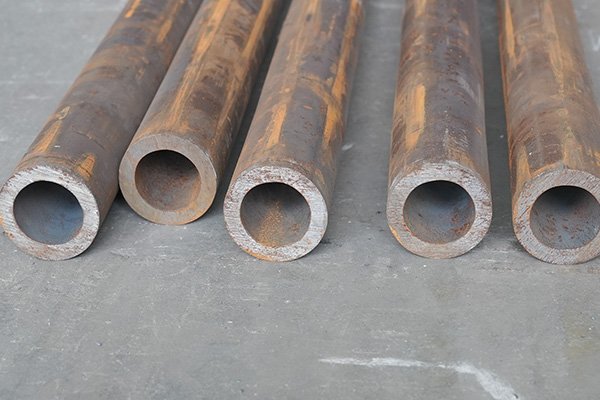

Comparison of Seamless and Welded Oil and Gas Line Pipe
Oil and gas line pipes are essential components in the transportation of hydrocarbons, and their manufacturing method significantly affects their performance, cost, and application suitability. The two primary types of pipes used are seamless and welded pipes. Each has distinct advantages and limitations depending on the operational requirements.
Seamless Pipes
Seamless pipes are manufactured from a solid billet heated and then pierced to form a hollow tube without any weld seam. This manufacturing process provides a uniform material structure throughout the pipe wall.
Advantages:
Higher Pressure and Temperature Resistance: The absence of weld seams reduces the risk of weaknesses, making seamless pipes suitable for high-pressure and high-temperature applications.
Improved Mechanical Properties: Seamless pipes generally have better tensile strength, toughness, and resistance to fatigue.
Uniform Wall Thickness: The manufacturing process results in consistent wall thickness and better dimensional accuracy.
Limitations:
Higher Cost: Production complexity leads to higher manufacturing costs compared to welded pipes.
Size Limitations: Seamless pipes are typically available in smaller diameters and shorter lengths compared to welded pipes.
Availability: Less readily available for very large diameters or long lengths.
Welded Pipes
Welded pipes are made by rolling steel plates or coils and welding the edges together longitudinally or spirally. Types include Electric Resistance Welded (ERW), Longitudinal Submerged Arc Welded (LSAW), and Spiral Submerged Arc Welded (SSAW).
Advantages:
Cost-Effectiveness: Generally cheaper to produce, especially for larger diameters and longer lengths.
Availability: Easier to manufacture in larger diameters and longer lengths, suitable for extensive pipeline projects.
Flexibility: Various welding techniques allow customization for different pressures and environmental conditions.
Limitations:
Weld Seam Weakness: Welded seams can be potential failure points under high stress or corrosive environments if not properly manufactured and inspected.
Variable Mechanical Properties: Weld zones may have different microstructures, potentially reducing toughness and fatigue resistance compared to seamless pipes.
Inspection Requirements: More stringent inspection and quality control are necessary to ensure weld integrity.
Application Considerations
Seamless pipes are typically chosen for critical applications such as high-pressure boiler tubes, petrochemical plants, and small-diameter high-pressure pipelines. Welded pipes are preferred for large-diameter pipelines, water and gas distribution systems, and applications where cost and availability are major concerns.
Conclusion
The choice between seamless and welded oil and gas line pipes depends on factors including operating pressure and temperature, diameter and length requirements, cost constraints, and safety considerations. Both types meet industry standards, but seamless pipes offer superior mechanical properties, while welded pipes provide economic and size advantages.
References
API Specification 5L: Specification for Line Pipe
ASTM A106/A53 – Standard Specification for Seamless Carbon Steel Pipe
ASTM A134/A135 – Standard Specification for Welded Carbon Steel Pipe
Totten, G. E. (2006). Steel Pipe: Manufacture and Properties.
Smith, W. F., & Hashemi, J. (2006). Foundations of Materials Science and Engineering.





